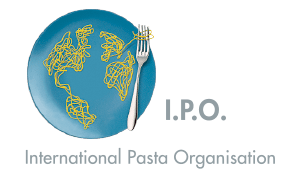PASTA IS GLOBAL
In a survey of 17 countries conducted by Oxfam, pasta was declared the #1 favorite food. Pasta meals are enjoyed as a canvas for other cultural ingredients and sauces around the globe in a surprising variety of traditional cultural recipes. In recognition of pasta’s rich cultural diversity, World Pasta Day in 2016 was held in Moscow, with a special event hosted by International Pasta Organisation (IPO) and AIDEPI, in partnership with ICE-Italian Trade Agency ITA. Here are snapshots of how pasta is enjoyed in Russia and in six additional countries around the globe. Mark your calendar for the 2017 festivities on October 25. How will you celebrate?
Russia
Surprised that Moscow hosted the 19th annual World Pasta Day festivities in 2016? You shouldn’t be. Russia is the fifth largest pasta producer (more than 1 million tons annually) after Italy, U.S., Turkey and Brazil. Russia alone imported nearly 47,000 tons of pasta in 2015, with per capita consumption of 7.2 kilograms per year.
Traditionally, pasta dishes in Russia were known as “makarony.” For instance, “Makarony Po-Flotski,” or Nautical Pasta, is a simple pasta and meat dish created generations ago by sailors who had few ingredients onboard their vessels. “Makarony with chees” and “makarony with sausages” are also staples. Today, Italian pasta dishes are gaining popularity with classic dishes like Pasta alla Bolognese and Pasta alla Carbonara appearing on menus throughout the country.
Did you know that one of the most popular recipes during the ‘70s and ‘80s in Italy featured a typical Russian ingredient? We are talking about “Penne alla Vodka.”
United States
The United States is melting pot of world cultures and cuisines, but despite the wide variety of cultural influences, pasta holds a special place at the American table. At least once a week 77% of Americans eat pasta. Americans love pasta even more than chocolate, with 56% of people in the US saying they could never give up pasta, while only 44% claimed they couldn’t imagine not having chocolate[1].
Although pasta meals grace the menus of the finest restaurants, they truly represent the simple pleasures. Pasta can make even the most humble vegetables sing. First Lady Michelle Obama has praised healthy pasta meals as an affordable way to get healthy meals on the dinner table quickly. In fact, a family of four people can have a plate of pasta with tomato sauce and cheese for even less than a fast-food hamburger meal for four.
China
Although the way pasta is cooked in the West (boil and drain) doesn’t lend itself to the Asian style of cooking and utensils, pasta dishes are in fact a rich part of Chinese cuisine. For example, noodles with a pork brown sauce, a typical Beijing recipe, is made by topping pasta with a sauce made from diced bacon, duck stock, and cucumber.
If we take into account instant pot noodles, China accounts for approximately half of the world’s pasta consumption. Plus, the market for durum wheat pasta is growing. In fact, in 2015, China imported upwards of 18,000 kilograms of pasta. In China, they traditionally eat spaghetti on special occasions, such as birthdays. The length of the “noodle” symbolizes a long life.
Brazil
Brazil is one of the primary pasta producers in South America, so it is not surprising that pasta is served alongside a few of the traditional dishes of the region. Many Brazilian families serve pasta alongside feijoada the hearty, meat stew of Brazil, while others top it with molho branco, a creamy pasta sauce that is made with corn flour.
Locally produced pasta is often made from soft wheat, so Brazil still imports a significant amount of durum wheat pasta. Pasta’s quick preparation, affordability, and high nutritional value have made it a popular pick among Brazilians. The steady energy of this complex carbohydrate food has also made healthy pasta meals a winning choice among Brazil’s many athletes.
Japan
There are three types of pasta that are commonly found in Japan: ramen (spaghetti made from egg and wheat, served in soup with meat and seaweed), soba (buckwheat noodles, often eaten in soup), and udon (noodles made from soft wheat, similar to bucatini). While these dishes differ from traditional durum wheat pasta dishes, they are gaining in popularity. In fact, spaghetti can now be found on the menus of school cafeterias.
Speaking of traditional recipes with a twist, “spaghetti alla napoletana” famous throughout the world, in fact is a pasta meal with Japanese roots. The recipe was born in the Hotel New Grand of Yokohama, a city famous for being one of the first landing places for Westerners between the 19th and 20th century. On top of pasta, this dish contains bacon, onion, bell peppers, tomato ketchup and if desired sausage or ham, all finished off with a sprinkle of Parmesan.
Ethiopia
While pasta consumption levels in Ethiopia are still very low, the growing urban community is ushering in an affinity for quick cooking meals and imported specialties, like pasta. In fact, spaghetti became a favorite when Italy occupied Ethiopia during World War II. Pasta is the perfect canvas for many of the local culinary traditions. In Ethiopia, pasta is combined with berberé, which is a mix of spices (chilies, ginger, cloves, coriander, pimiento, rue, ajowan and long pepper) used in many recipes of Ethiopian and Eritrean cooking. Therefore, the classic dish, Spaghetti Berberé and a sprinkle of local Ayib cheese, is born. Another twist on Ethiopian cuisine is the “Trout Spaghetti,” which as the name suggests, is the same recipe with the added bonus of trout bits.
Germany
Germany is a top importer of durum wheat pasta, and traces of this hearty food can be found throughout German culture and cuisine. Spatzle is the most popular pasta dish found in the country, especially in Southern Germany, while the most loved dried pasta recipe is spaghetti with a meat ragú. Germans even make a pasta dish where jam is added to pasta (as if it were bread), resulting in a dish true to the sweet-salty tradition of German cookery.
Spaghetti Bolognese is one of the main dishes found at children’s birthday parties in Germany, as they have an amusing game (called “Stop!”) to go with it. The children race to finish their plate of spaghetti and must stop when the judge shouts “Stop!” with obvious and hilarious results ensuing.
Outside of the home, pasta is also a popular pick among adults and German dignitaries. In fact, in 2009, Bild magazine nicknamed German Chancellor Angela Merkel the “Chancellor of Pasta,” thanks to her preference for pasta when dining out.
[1] Pasta is an Affordable Healthy Meal Option That Satisfies Everyone’s Palate; ilovepassta.org.


